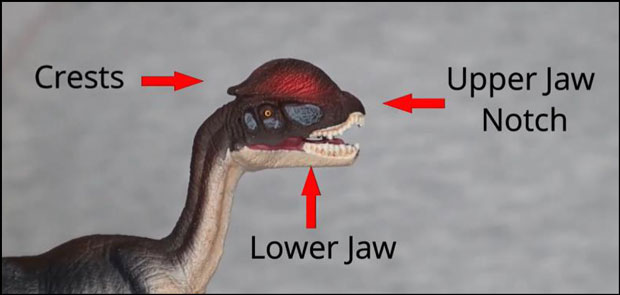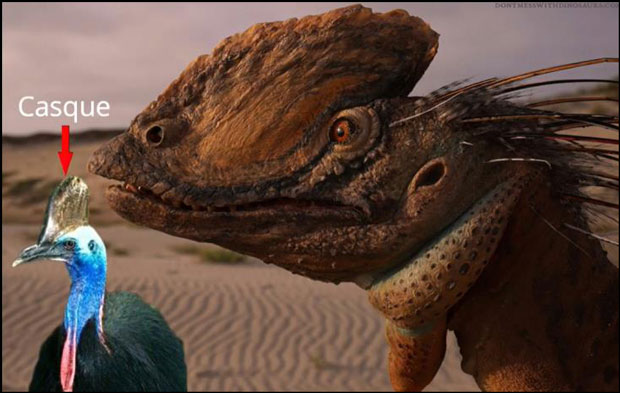Time to “Beef Up” Dilophosaurus wetherilli
A comprehensive review of the fossil material associated with the Early Jurassic crested theropod Dilophosaurus (D. wetherilli) has been published. The consequences of this newly published paper for manufacturers of dinosaur models are profound. It is likely that our view of “double crested lizard” will change and with the writing of this paper, all the Dilophosaurus figures and replicas are very probably all wrong!
It’s time to “beef up” Dilophosaurus and to stop depicting it as a lightly built, gracile, weak-jawed scavenger but to recognise that this dinosaur was an apex predator!
Everything Dinosaur team members have produced a short YouTube video that explains what has happened.
Time to “Beef Up” Dilophosaurus (D. wetherilli)
Video credit: Everything Dinosaur
All Dilophosaurus wetherilli Dinosaur Models May be Wrong!
An analysis of the five most-complete Dilophosaurus specimens reveals that Dilophosaurus had stronger jaws than previously thought. That distinctive notch between the premaxilla and the maxilla (the upper jaw bones), which is so carefully depicted in numerous replicas and figures, might be much less pronounced. The original interpretation of the “kink” being put down to the fragmented and poor condition of the fossil material. The shape of the upper jaws may be a result of taphonomy and it might not reflect the actual shape of the bones.
Lots of Dilophosaurus Dinosaur Models Feature in Everything Dinosaur’s Video

Picture credit: Everything Dinosaur
Nasal and Lacrimal Bones Form the Crests
It is the nasal and lacrimal bones that form the famous crests. This new paper suggests that these features were not thin and bony but the hollow, pneumatised cores were covered with keratin or keratinised skin making them much larger than previously thought. Although their overall shape remains uncertain, these crests may have played a role in helping this large animal to lose heat. Recently published research (Eastick et al), suggests that the casques of large, ground-dwelling birds such as cassowaries might act as thermal windows.
The casque on the top of the head of the cassowary could help this large bird to lose heat when it is very hot and restrict heat loss in cooler conditions. At the time of publication (2019), it was proposed that these findings might have implications for the function of similar structures in avian and non-avian dinosaurs and that includes Dilophosaurus wetherilli.
Used for Display and Thermoregulation?

Picture credit: Everything Dinosaur (puppet of Dilophosaurus created by Brian Engh)
Everything Dinosaur’s YouTube video highlighting the scientific paper on Dilophosaurus that may change the way models of this dinosaur are made lasts for a fraction over eleven minutes. It provides an overview of the recent paper and discusses how future Dilophosaurus dinosaur models might look.
To read Everything Dinosaur’s blog post about the newly published research reviewing the Dilophosaurus wetherilli fossil material: Beefing Up Dilophosaurus.
Everything Dinosaur’s YouTube channel contains over 175 dinosaur and prehistoric animal videos, including model reviews, tips and hints about prehistoric animal model collecting, new releases, fossil discoveries, updates and insider information.
Discover Everything Dinosaur on YouTube: Everything Dinosaur on YouTube. We recommend that you subscribe to our YouTube channel.
Everything Dinosaur would like to acknowledge the help and support of University of Texas at Austin/Jackson School of Geosciences for their help in creating our YouTube video.
The Everything Dinosaur website: Everything Dinosaur.






Leave A Comment